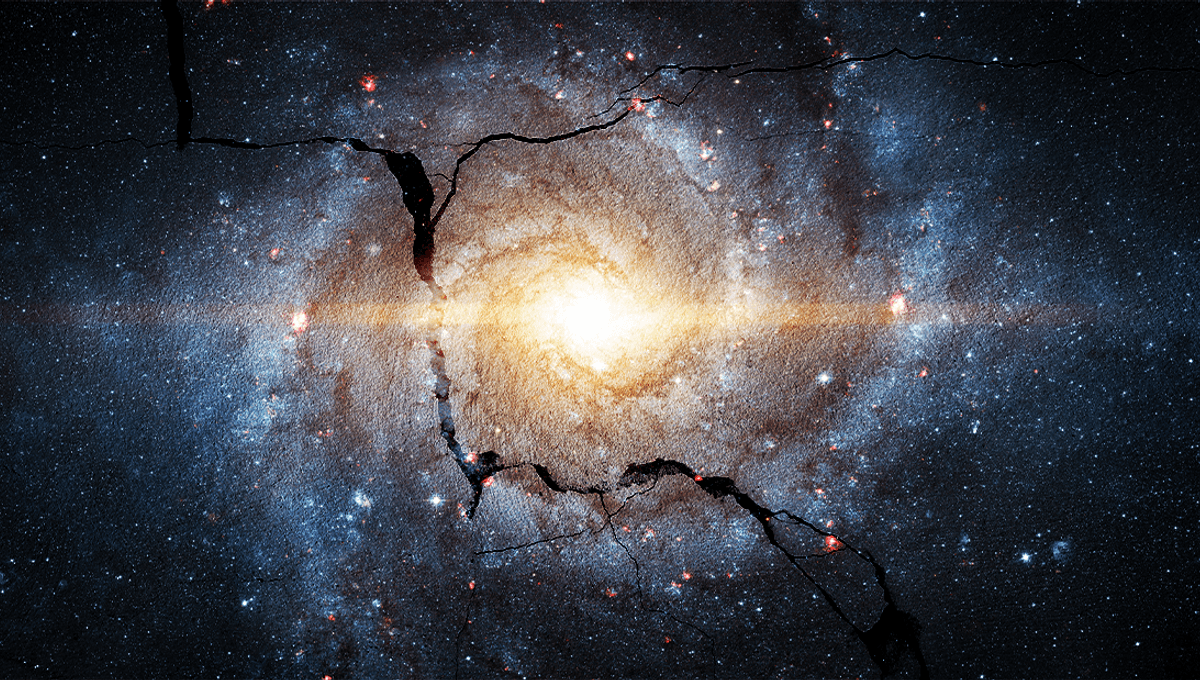
A team of astrophysicists says they may have found evidence for “cosmic strings”, long-hypothesized “cracks” in the universe left over from early in its expansion.
Cosmic strings were first suggested in the 1970s by theoretical physicist Tom W. B. Kibble, and later revived in the context of string theory. The one-dimensional strings, far narrower even than a proton, are proposed to have sprung into existence in the very first second of the universe and could potentially stretch right across it.
The strings, sometimes referred to as defects or “cracks” in the universe, had not been detected since they were conceived, though there were a few ideas on how we might rediscover them. When strings cross, for instance, it could provide us an opportunity to find them.
“Once formed, a loop is doomed,” the LIGO Scientific Collaboration explains. “It oscillates, radiates gravitationally, shrinks and eventually evaporates. Strong gravitational emission occurs at the pinch-off points of the loop, the cusps, which move with a velocity close to the speed of light. Powerful bursts of gravitational waves are expected to be produced by cosmic string cusps.”
Cosmic strings could also be detectable in the Cosmic Microwave Background (CMB) – the leftover radiation from the Big Bang that is faintly detectable and permeates all of the known universe. In the study, one team found several potential candidates for cosmic strings, focusing on an area called CSc-1.
Cosmic strings – if they do exist – would be extremely dense, and a possible source of potentially detectable gravitational waves. They could also cause gravitational lensing, where space-time is warped by immensely heavy objects, sometimes magnifying objects far into the distance to astronomers.
Looking at two galaxies in the region they identified as the best candidate, the team suspects they may have found evidence of gravitational lensing. Two galaxies near each other and captured by the Himalayan Chandra Telescope could in fact be one galaxy, according to the team, which have been lensed by a cosmic string.
Analyzing the candidate, they found similar spectra between the two (or one) galaxy/ies.
“Our modeling of observational data in CSc-1 shows that a large number of pairs can be explained by the complex geometry of the string,” the researchers wrote in their paper.
“Considering a model of a cosmic string with the bend in the image plane can improve the search for GL event candidates. In particular, modeling of the SDSSJ110429-A,B galaxy pair has shown that the observed angle between the components of the pair can be explained if the string is strongly inclined to the line of sight and, possibly, bent in the image plane.”
“We also detected the sign of the sharp isophotal edge in one image, which along with CMB and spectral data strongly suggests the possibility of a [cosmic string] detection.”
While interesting and worthy of further observations, the team is of course cautious. Perhaps the galaxies have similar properties from being birthed in close proximity, or there is an unusual gravitational lens to blame. Given that cosmic strings have previously not been detected, the team would like to observe further potential evidence using more powerful telescopes.
The study is published in Bulletin de la Société Royale des Sciences de Liège.
An earlier version of this article was published in October 2023.
Source Link: Astronomers May Have Found "Cracks In The Universe" After Looking Closer At Suspicious Galaxies